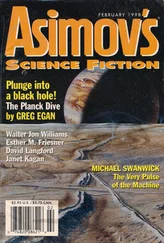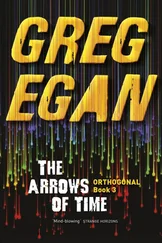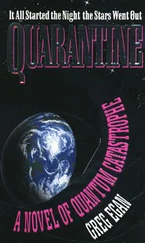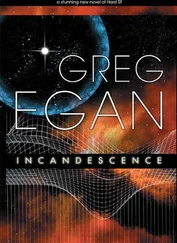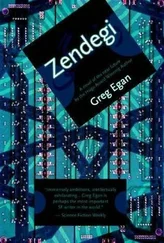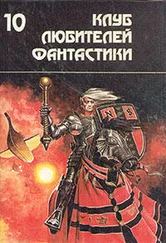Greg Egan - The Eternal Flame
Здесь есть возможность читать онлайн «Greg Egan - The Eternal Flame» весь текст электронной книги совершенно бесплатно (целиком полную версию без сокращений). В некоторых случаях можно слушать аудио, скачать через торрент в формате fb2 и присутствует краткое содержание. Жанр: Фантастика и фэнтези, на английском языке. Описание произведения, (предисловие) а так же отзывы посетителей доступны на портале библиотеки ЛибКат.
- Название:The Eternal Flame
- Автор:
- Жанр:
- Год:неизвестен
- ISBN:нет данных
- Рейтинг книги:4 / 5. Голосов: 1
-
Избранное:Добавить в избранное
- Отзывы:
-
Ваша оценка:
- 80
- 1
- 2
- 3
- 4
- 5
The Eternal Flame: краткое содержание, описание и аннотация
Предлагаем к чтению аннотацию, описание, краткое содержание или предисловие (зависит от того, что написал сам автор книги «The Eternal Flame»). Если вы не нашли необходимую информацию о книге — напишите в комментариях, мы постараемся отыскать её.
The Eternal Flame — читать онлайн бесплатно полную книгу (весь текст) целиком
Ниже представлен текст книги, разбитый по страницам. Система сохранения места последней прочитанной страницы, позволяет с удобством читать онлайн бесплатно книгу «The Eternal Flame», без необходимости каждый раз заново искать на чём Вы остановились. Поставьте закладку, и сможете в любой момент перейти на страницу, на которой закончили чтение.
Интервал:
Закладка:
Tamara was silent. They’d reached the junction where they’d have to go their separate ways.
Ada said, “So your co’s not the same?”
“I’m working on it,” Tamara said. “Right now all he can see is the danger, but I’m sure I’ll bring him round in the end.”
12
Carla was reaching behind the textbooks for her stash of groundnuts when she heard someone moving on the ropes near the entrance to the classroom. She closed the cupboard quickly, embarrassed. She should have been strong enough to deal with her hunger without playing these stupid games.
Patrizia appeared in the doorway. “Do you have a moment, Carla? I need to ask you about something.”
“Of course.” Carla’s gut was squirming, cheated of the imaginary meal she’d promised it, but she kept her voice even and her face composed.
Patrizia dragged herself to the front of the room. “I know I made a fool of myself, with what I said about the tarnishing,” she began.
“That’s not true,” Carla insisted. “I asked for wild ideas, and you were brave enough to offer one. Just because it didn’t hold up doesn’t make you foolish.”
“Well, I’ve had another wild idea,” Patrizia admitted. “But this time, I was wondering if you’d hear it in private.”
“Of course.”
“I hope I’m not wasting your time,” Patrizia said. “Sometimes it’s so hard to concentrate that I start making stupid mistakes. Things I ought to know just… go into hiding.”
The misery in that last phrase was painful to hear, but Carla didn’t know what she could do about it. It wasn’t her place to tell the poor girl to put off the famine for another year or two—trading the risk that she’d face a much more arduous struggle, later, for a little more youthful energy and clarity when she really needed it.
“We all make mistakes,” she said. “Tell me your idea, I’ll be happy to hear it.”
Patrizia began haltingly. “The first part is just elementary mechanics, really. But I wanted to check it with you before I go any further.”
Carla did her best to hide her dismay. She’d been thinking of the groundnuts all through the lesson, but if she could survive her cravings for a whole bell she could remain polite for another few lapses.
She said, “Go ahead.”
“Suppose you have a motionless particle, and it’s struck by another particle that’s about three times as heavy,” Patrizia said. “I think their energy-momentum vectors before and after the collision would be something like this:”
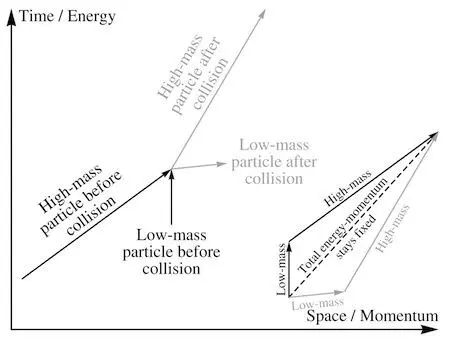
“That looks fine to me,” Carla replied. The first diagram portrayed the history of the collision, while the second repositioned the same four vectors to make the geometrical rules that governed them visible at a glance. “You’re just using the triangle law, right? The sum of the two energy-momentum vectors has to be conserved, and their individual lengths are just the masses of the particles, which don’t change. So the vectors will form two sides of a triangle whose shape is left unchanged by the collision, and whose third side—the total energy-momentum—remains fixed.”
Patrizia seemed relieved, but still far from confident. “And all the possibilities for a collision like this can be found by rotating that triangle around its third side?”
“Yes.”
“That will give you the off-axis collisions as well? You just swing the triangle out…?” She sketched some examples, showing what happened to the particles’ momenta if they glanced off each other during the impact, scattering to either side of the original axis, bringing in another dimension of space.
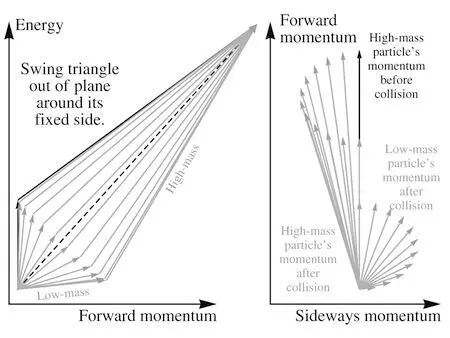
“That’s all correct,” Carla assured her, letting a hint of impatience into her voice. Wherever Patrizia was taking this, she had the basics right, she could move on.
Patrizia said, “On the same assumptions, I calculated the final energy for the heavy particle, for a few different starting energies.” She opened a pocket, pulled out a sheet of paper and unrolled it.

Carla hesitated now. Though she’d surely made a similar plot once herself—as part of some long-forgotten exercise when she’d first been studying mechanics—this had gone past the obvious-at-a-glance stage. “The angle here is measuring how far the heavier particle ends up off-axis?” she asked.
“Yes,” Patrizia said. “The details of the collision itself—whether it’s glancing or head-on—would determine that angle, but I’m just trying to be clear about the final outcome, about the possible combinations of angles and energies allowed by the conservation laws. The really striking thing about these curves is the way the greatest angle of deflection always turns out the same! So long as the lighter particle starts off at rest, there’s a maximum angle at which the heavier particle can end up being knocked off course, and it only depends on the ratio of the masses—the energy of the collision doesn’t come into it.”
“Hmm.” Carla couldn’t recall ever being aware of that result, and she couldn’t see any simple geometrical reason why it had to be true, so she worked through the algebra on her chest. The claim turned out to be perfectly correct: the maximum angle of deflection was the same, regardless of the energy.
Carla’s impatience was tempered by curiosity now. Was Patrizia going to try to rescue her tarnishing theory by adding a second luxagen, three times heavier than the first?
Patrizia said, “I can put curves with exactly the same form as this through the data we measured in the light scattering experiment.” She dug out a second plot.

“All four curves use the same mass ratio, of about three to ten,” Patrizia explained. “You can find that straight away, from the maximum scattering angle! And then the only parameter left to determine is the vertical scale.”
Carla reached over and took the plot from her. With a judicious choice of just two numbers, Patrizia’s model had nailed every point. A pattern like this didn’t happen by chance. What these curves implied was that the light scattering off the luxagens was behaving exactly like a particle, about three times as heavy as the ones it was striking.
Except… this plot wasn’t showing the energy of a particle, it was showing the frequency of a wave. What they’d actually measured for that vertical axis had been the scattered light’s subsequent deflection through a prism, and then that had been converted to wavelengths and frequencies using the prism’s calibration against a light comb. So how did energy come into it? The energy in a light wave depended on its brightness—something they hadn’t even tried to measure.
“Tell me,” Carla asked, “what do you think’s going on here?”
Patrizia spoke tentatively. “Surely this means there’s some kind of particle, moving at the speed of the light itself? Not trapped in the wavefronts, like a luxagen would be, but actually traveling with the light .”
“And the luxagens we released from the mirrorstone scattered this particle?”
“Yes.”
“And then what?” Carla asked indignantly. “The light that had been pushing this mystery particle along decides to follow it ? The laws of mechanics tell us how the particle alone should be moving after the collision… and the light wave accommodates that by adjusting its own speed, adjusting its frequency, to maintain the original relationship? Is the light supposed to be propelling this particle—or is the particle magically dragging the light around?”
Читать дальшеИнтервал:
Закладка:
Похожие книги на «The Eternal Flame»
Представляем Вашему вниманию похожие книги на «The Eternal Flame» списком для выбора. Мы отобрали схожую по названию и смыслу литературу в надежде предоставить читателям больше вариантов отыскать новые, интересные, ещё непрочитанные произведения.
Обсуждение, отзывы о книге «The Eternal Flame» и просто собственные мнения читателей. Оставьте ваши комментарии, напишите, что Вы думаете о произведении, его смысле или главных героях. Укажите что конкретно понравилось, а что нет, и почему Вы так считаете.

